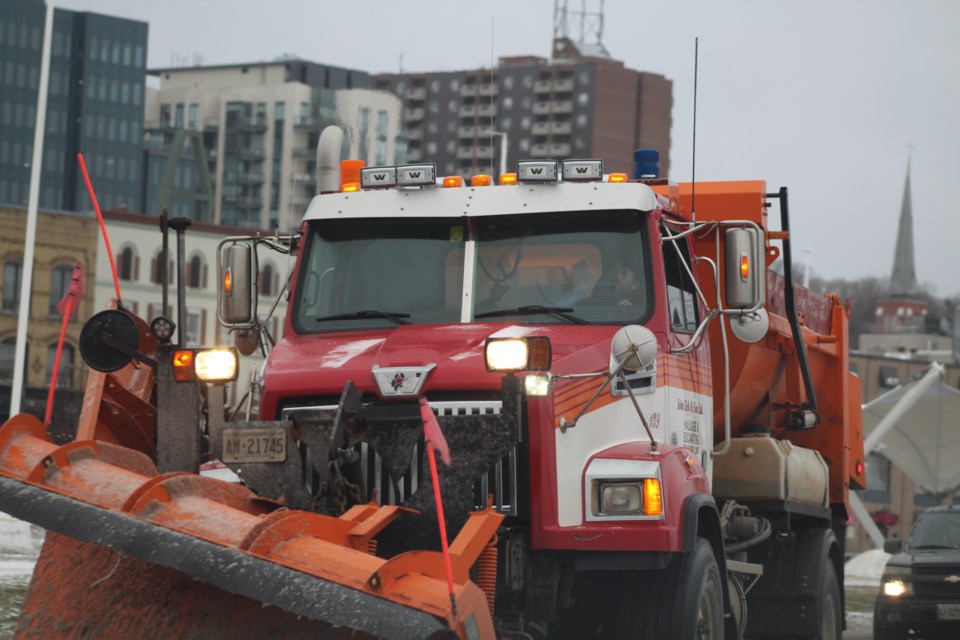People who walk Barrie’s waterfront trail will have noticed it has been blocked at its northwest corner, next to the Spirit Catcher. Heavy construction equipment is parked at the site, behind barriers.
Prior to the detour, regular walkers may have noticed a build-up of silt in the creek outfalls, two of which empty into the city marina. Several of these “sandbars” had actually surfaced, above the water level.
How did this material get there?
It arrived via Barrie’s storm sewers. It is part of the sand the city scatters liberally on our streets every winter. During our winter thaws, melt water washes this sand into storm sewers.
In spring, vacuum trucks pump out the accumulated material from sewer catch basins. What remains on the streets is removed by the city’s sweeper trucks, colourfully named Elgin Eagles. On my street, I watched one “eagle” make three passes in each direction. There was still sand on the road.
The collected sand is graded by screening. Larger grains may be reused. The smaller stuff is spread on active areas of our landfill at the end of each day to suppress odour and deter scavenging birds.
Despite material intercepted by catch basins, many tonnes make their way to our waterfront every year. This winter, they are finally being removed by dredging. Of course, this work isn’t cheap. The cost is covered from our property taxes.
Although the operation to dredge out the creeks flowing into Kempenfelt Bay will cost a few million dollars, it must be done. To my mind, the issue is a little different. I am asking: Why does the City of Barrie spread sand on snow-covered roads?
If there is an improvement in traction, it will be slight. Modern winter tires grip snow extremely well due to the hydrophilic rubber tread compounds in their treads. Hydrophilic rubber is attracted to water, whether solid or liquid. Their rubber compounds remain soft in the cold, so conforms well to the surfaces it contacts. Combined with multi-siped tread patterns, these tires perform well on snow and surprisingly well on ice.
All-season tires are made of hydrophobic rubber, which repels water. The lack of attraction to water is one reason their winter grip can be poor. Tread design and rigidity explain the rest. These tires are designed for summer use where harder rubber compounds offer both good grip and excellent wear at high temperatures.
Returning to the question of sanding snow-covered roads: The City of Barrie spends money to buy the sand, store it, spread it (including buying and maintaining appropriate equipment) and, finally, remove it from streets, sewers, and now our harbour and creeks.
I would like to know if this represents good value for money, given any traction improvement on snow-covered roads will be slight.
And, finally, I know many of Barrie’s streets have had speed bumps installed to slow traffic. In the autumn, these are removed to prevent damage to snow plows or to speed bumps.
So, what slows drivers in winter when these “sleeping policemen” have been taken away?
In fact, the city is removing one of the most effective ways to slow traffic in winter — a snow-covered surface. On little-travelled sideroads, like the street I live on, snow plowing could leave a hard surface instead of bare pavement.
That could be one of the most effective ways to combat speeding — and protect our children.
Barrie resident Peter Bursztyn is a self-proclaimed “recovering scientist” who has a passion for all things based in science and the environment. The now-retired former university academic has taught and carried out research at universities in Africa, Britain and Canada. As a member of BarrieToday’s community advisory board, he also writes a semi-regular column. If you have a question Peter might be able to answer or something you’re curious about, email us at [email protected].



